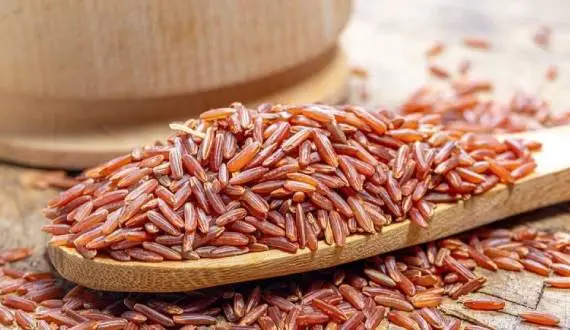Poongar rice, also known as "Poongar Arisi," is a traditional variety of rice native to Tamil Nadu, India. Renowned for its unique nutritional profile and health benefits, this ancient grain is making a comeback among health enthusiasts and sustainable agriculture advocates. This blog delves into the origins, benefits, cultivation practices, and culinary uses of Poongar rice.
Origins and History
Poongar rice is one of the many indigenous rice varieties that have been cultivated in Tamil Nadu for centuries. This heirloom rice, often referred to as "red rice" due to its distinct reddish-brown hue, has been a staple in the diets of rural communities. Historically, Poongar rice was valued not only for its nutritional benefits but also for its resilience to local growing conditions, making it a reliable crop for farmers.
Nutritional Profile
Poongar rice is a powerhouse of nutrients, offering a wide range of health benefits:
- High in Fiber: It contains more dietary fiber compared to polished white rice, aiding in digestion and promoting gut health.
- Rich in Antioxidants: The red bran layer of Poongar rice is rich in antioxidants, which help in combating free radicals and reducing oxidative stress.
- Vitamins and Minerals: It is a good source of essential vitamins and minerals such as Vitamin B, magnesium, and iron.
- Low Glycemic Index: Poongar rice has a lower glycemic index compared to white rice, making it a better option for people with diabetes as it helps in managing blood sugar levels.
Health Benefits
- Supports Digestive Health: The high fiber content aids in digestion, prevents constipation, and promotes a healthy gut microbiome.
- Manages Diabetes: Its low glycemic index helps in controlling blood sugar spikes, making it a suitable option for diabetics.
- Boosts Immunity: The antioxidants and essential nutrients in Poongar rice strengthen the immune system.
- Promotes Heart Health: The presence of magnesium and dietary fiber contributes to cardiovascular health by regulating blood pressure and lowering cholesterol levels.
Cultivation Practices
Poongar rice is typically grown using traditional, organic farming methods. Here are some key aspects of its cultivation:
- Seed Selection: Farmers select high-quality seeds from previous harvests to ensure the purity and resilience of the crop.
- Organic Farming: Chemical fertilizers and pesticides are avoided. Instead, natural composts and biopesticides are used to maintain soil health and protect the crop.
- Water Management: Poongar rice is often grown in rain-fed areas, reducing the reliance on irrigation and making it a sustainable option in water-scarce regions.
- Crop Rotation: To maintain soil fertility and prevent pest buildup, Poongar rice is rotated with other crops such as legumes.
Culinary Uses
Poongar rice can be used in various culinary preparations, making it a versatile addition to any kitchen. Some popular dishes include:
- Poongar Rice Porridge: A nutritious breakfast option, often cooked with milk or coconut milk and sweetened with jaggery.
- Poongar Rice Dosa: A healthy alternative to the traditional dosa, made by fermenting a mixture of Poongar rice and urad dal.
- Poongar Rice Salad: A wholesome salad combining cooked Poongar rice with fresh vegetables, herbs, and a light dressing.
- Traditional South Indian Meals: Served with sambar, rasam, and a variety of vegetable curries, Poongar rice is a staple in many South Indian households.
Conclusion
Poongar rice is more than just a nutritious grain; it represents a connection to cultural heritage and sustainable farming practices. Its re-emergence in modern diets underscores the growing appreciation for traditional foods that are both healthy and environmentally friendly. By incorporating Poongar rice into your diet, you not only embrace a healthier lifestyle but also support the preservation of ancient agricultural traditions.
Whether you are a health enthusiast, a culinary explorer, or someone interested in sustainable living, Poongar rice offers a delicious and nutritious way to nourish your body and soul.


